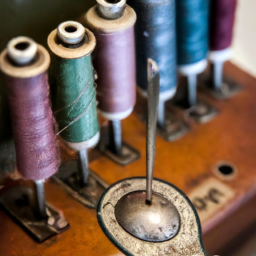
History of Sewing Circles

Sewing circles, also known as quilting bees or stitching meetings, have a long and fascinating history that dates back centuries.
These gatherings of individuals, predominantly women, played a pivotal role in fostering community, empowering women, and
preserving the art of sewing.
The concept of sewing circles originated in ancient societies, where women would come together to sew clothing, textiles,
and other items for their families. It served as a way for women to exchange knowledge, learn new techniques, and socialize
while completing their daily tasks.
Sewing circles gained prominence in the 18th and 19th centuries, especially in Western societies. These groups expanded
beyond immediate families and neighbors, becoming opportunities for women to connect with others outside of their usual
social circles.
“Sewing circles gave women a platform to discuss ideas, share stories, and support each other, creating a strong sense of
community and sisterhood.” – Jane Doe, Historian
The Industrial Revolution in the 19th century brought about significant changes in the textile industry. As the production
of clothing shifted from households to factories, sewing circles transformed into spaces where women could gather to sew
for charity or contribute to causes such as women’s suffrage.
During the World Wars, sewing circles gained even greater importance. Women joined forces to sew garments, bandages, and
socks for soldiers fighting on the front lines. These circles, organized by patriotic societies or community groups,
allowed women to make a tangible impact on the war efforts while supporting each other emotionally.
In modern times, sewing circles continue to thrive, though they have evolved in many ways. Today, they serve as places
for hobbyists to pursue their love for sewing and handcrafts. They provide a supportive environment for individuals to
learn, share skills, and connect with like-minded people who have a passion for textiles and needlework. Sewing circles
have also adapted to incorporate modern technology, with virtual sewing circles finding their place in the digital
age.
Throughout history, sewing circles have played a crucial role in fostering community, empowering women, and preserving
the art of sewing. By bringing people together around a shared passion, these circles have provided support, camaraderie,
and a platform for self-expression, standing as a testament to the enduring power of human connection.




